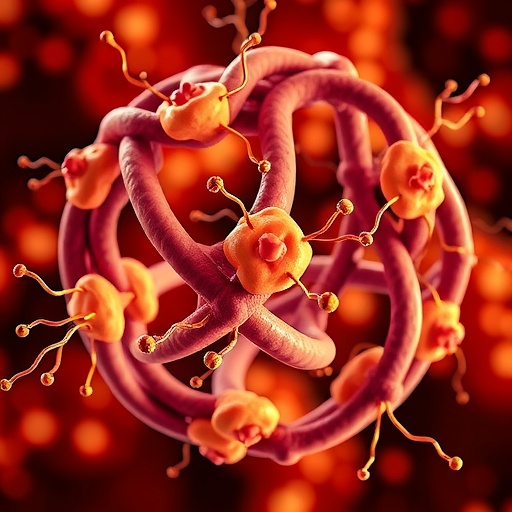Newborns of stressed mothers show early EEG patterns suggestive of differing neurodevelopment
Does exposure to stress early in life affect a baby’s brain development, and is there a way to single out babies who might benefit from early intervention? A two-center study led by Boston Children’s Hospital, published today in JAMA Pediatrics, used brain EEGs to begin to get at these questions in an objectively measurable way. It found that infants whose mothers reported high levels of stress have a distinct pattern of brain activity as measured by EEG — at only 2 months of age.
“The EEG has been found to be exquisitely sensitive to perturbations in the environment, and thus we are not entirely surprised to see an association between stress in a mother’s life and her infant’s brain activity,” says Charles Nelson, PhD, director of the Laboratories of Cognitive Neuroscience at Boston Children’s Hospital and the study’s senior investigator. “What we were surprised by, in part, was how early in life we see this association.”
Tapping the EEG
EEGs, available in most pediatric practices, measure brain electrical activity, and are usually used to diagnose or evaluate people with epilepsy. But the EEG signal also contains other kinds of information about the brain. Prior studies have linked the signal’s different frequency bands — alpha, beta, theta, and delta waves– with different kinds of brain activity.
“Activation of different frequency bands is associated with different aspects of cognitive functioning,” explains Lara Pierce, PhD, a researcher in the Laboratories of Cognitive Neuroscience and the study’s first author. “We think it tells us something about how the brain is developing.”
The study enrolled 113 2-month-old babies in primary-care practices at Boston Children’s Hospital and Children’s Hospital Los Angeles serving mostly families from low-income backgrounds. The babies’ mothers filled out questionnaires designed to measure their stress level. One inquired about stressful life events such as recent unemployment, financial difficulties, housing insecurity, exposure to violence, illness, death and marital problems. The other directly asked about stress mothers were feeling.
The babies had EEGs taken while their mothers held them, and while they looked at a video showing infant toys. In all, 70 babies had usable EEG data.
Mothers’ stress, babies’ brains
Babies of mothers who reported feeling higher levels of stress tended to have lower power in the higher frequency EEG bands — gamma and beta — than the other infants. They also tended to have relatively higher power in the lower-frequency bands — delta and theta.
“Power in higher-frequency bands has been associated with more complex cognitive functions, such as language abilities later in childhood,” Pierce explains. “We tend to see more power in lower-frequency bands earlier in development, but elevated low-frequency power has also been observed in kids who have experienced psychosocial adversity. This has been interpreted in some cases as a sign of delayed brain development.”
The researchers then took the opposite approach. They used a statistical technique to look for patterns in the EEG data that could indicate subgroups of children with different profiles of EEG activity. Then, they looked for environmental characteristics associated with those profiles.
That turned up a possible mitigating factor: Babies whose mothers had more years of education were significantly more likely to have an EEG profile with higher power across frequency bands. Pierce and her colleagues eventually want to tease out whether maternal education itself is beneficial for babies’ brains, or whether other factors that enable mothers to pursue further education are the ones that might be “protective.”
Tracking brain trajectories
Prior research has found that babies start to show differences in EEGs by about 6 months of age. This is the first study showing EEG changes related to factors associated with maternal stress within a low-income context as early as 2 months, says Pierce. She and her colleagues plan to repeat the EEGs throughout the infants’ first year and again at 24 and 36 months, and to see whether these patterns predict how children develop as they get a bit older.
“What we found maps pretty well to what we’ve seen in older kids who have experienced different types of adversity, or who live in low socioeconomic contexts,” Pierce says. “We are seeing effects early in development that are associated with high levels of reported maternal stress. As we follow up, we hope that understanding what specific factors in infants’ early environments impact the developing brain — and what factors might help to protect it — will ultimately help us understand how to best support families facing a variety of circumstances.”
###
The study’s coauthors were Barbara L. Thompson, PhD, Alma Gharib, PhD, Lisa Schlueter, PhD, Suzanne Roberts, MD and Pat Levitt, PhD, of Children’s Hospital Los Angeles and Emily Reilly, BS, Viviane Valdes, MPH and Kathleen Conroy, MD, MS of Boston Children’s Hospital. Charles A. Nelson, PhD, director of the Laboratories of Cognitive Neuroscience at Boston Children’s, was senior author. The study was funded by the JPB Foundation-funded Research Network on Toxic Stress and Health (grant 1025) and the Simms/Mann Family Foundation.
About Boston Children’s Hospital
Boston Children’s Hospital, the primary pediatric teaching affiliate of Harvard Medical School, is home to the world’s largest research enterprise based at a pediatric medical center. Its discoveries have benefited both children and adults since 1869. Today, more than 3,000 scientists, including nine members of the National Academy of Sciences, 17 members of the National Academy of Medicine and 11 Howard Hughes Medical Investigators comprise Boston Children’s research community. Founded as a 20-bed hospital for children, Boston Children’s is now a 415-bed comprehensive center for pediatric and adolescent health care. For more, visit our Vector and Thriving blogs and follow us on social media @BostonChildrens, @BCH_Innovation, Facebook and YouTube.
Media Contact
Bethany Tripp
[email protected]
http://dx.




